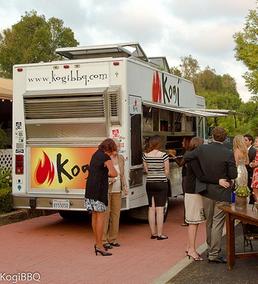
Tyler Cowen is a professor of economics at George Mason University. He is a blogger at marginalrevolution.com, a leading economics blog. He writes regularly for the New York Times, and has written for Forbes, the Wall Street Journal, Newsweek, the Washington Post, the Los Angeles Times and the Wilson Quarterly.
While providing readers with valuable information about basic economics, An Economist Gets Lunch is very much a book for foodies. How did the idea of marrying these two concepts develop for you?
I have been writing an ethnic dining guide for 24 years, originally Xeroxed sheets about Orange County, Calif., and today a blog about the Washington, D.C., area. It occurred to me that economic principles were driving a lot of the analysis, and those are the ideas I am seeking to communicate in the book.
Keep in mind also that economics, in its origins, was almost exclusively about the production of food. This is obvious when reading Adam Smith or Fredric Bastiat, who wrote about the feeding of Paris in the 19th century; in earlier times food production was of course, most of the economy. So I'm just taking economics back to its roots.
You offer readers a great way to vary their shopping routines and practices by suggesting shopping at ethnic supermarkets. Are there any other simple ways that we can shake up our thinking about food and have a better experience both gastronomically and economically?
 Try to introduce more serendipity into your food experiences, especially if you are an established foodie. Let someone else order for you. Hire a food truck to cater your next party in your house. Learn how to use mail order for the best ingredients. Avoid eating out in high-rent neighborhoods such as city centers, and stay off of the main avenues. Look for restaurants which are hard to find. Don't assume that pricier restaurants are better. Buy from suppliers who treat their animals well. Those are just a few tips.
Try to introduce more serendipity into your food experiences, especially if you are an established foodie. Let someone else order for you. Hire a food truck to cater your next party in your house. Learn how to use mail order for the best ingredients. Avoid eating out in high-rent neighborhoods such as city centers, and stay off of the main avenues. Look for restaurants which are hard to find. Don't assume that pricier restaurants are better. Buy from suppliers who treat their animals well. Those are just a few tips.
Aside from barbeque, is there a type of food that Americans do well?
Immigrant food! In all of its manifestations. I am also especially fond of the cuisines in southwest Louisiana and Albuquerque and other parts of New Mexico. American cuisine is not based on the idea of perfecting a high culture over centuries, so look for innovation.
We receive so many mixed and confusing messages about the economics of food and what we should and shouldn't buy or eat. In your opinion, what is the greatest myth or fallacy perpetuated about food?
The biggest myth is that consumers and individuals are unable to find their own innovations. That is our best chance of improving America's obesity problem or in improving the quality of American food. Government is much less effective as a source of innovation, yet so often foodies put their trust in government. In reality, government is pretty tightly captured by the interests of agribusiness.
What are the most potentially damaging food trends happening right now? How about the most positive trends?
The whole idea of being a locavore is a lot of fuss over nothing. The best way to help the environment is to eat less meat, and very often foods from far away, especially if shipped by water, are better for the environment. The local farmer, who keeps on driving his truck to the market, isn't very efficient and often isn't very good for the environment either.
The most positive trend is how much better American food tastes today than 30 or 40 years ago. Our restaurants and supermarkets are so much better. We still need to work on the environment and on issues of animal welfare. --Debra Ginsberg

